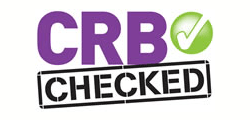Flooded Basement in a London Home
Background
We were contacted on the 16th September 2021 by a homeowner regarding a flooded basement. The basement of their home had experienced water damage due to an ingress of water following heavy rainfall.
We attended the property on the same day to complete a site survey. This included a visual inspection and a non-invasive moisture survey.

Outcome of Site Survey
We were able to identify that the heavy rainfall had entered the basement through the coal chute and through untankered walls.
The basement had solid brick walls and a concrete floor which was covered with carpet.
The water caused irreparable damage to the carpet and most of the contents of the basement. The basement was used to store a lot of items, many of which were in cardboard boxes. There was also a wardrobe that had sustained water damage.
Very high moisture levels were recorded along the walls and floor.
We also found mould growth in the basement.
Our Solution
Our client was putting in an insurance claim and we were happy to assist them with this.
We provided a list of items that were Beyond Economical Repair (BER). BER means items that are unable to be repaired or would cost more to repair than the value of the item itself. We provided photo evidence to support the claim.
Flood Dr remediation plan:
- Once the list and photos mentioned above had been completed, we disposed of the items safely.
- The floor and walls were cleaned using a broad-spectrum biocide.
- Adenosine Triphosphate (ATB) swab testing was carried out. ATB is present in and around living cells, therefore the level of ATP shows if an area is clean. This was used to validate our cleaning and disinfection process.
- Our remotely monitored* drying equipment was installed for 14 days, this included a Dri-Eaz 1200 and an Air Mover.
*Remote monitoring - our drying equipment has an internal remote monitoring system. This enables our technicians to monitor the atmospheric conditions and the progress of the drying remotely. Our clients are provided with access to the remote monitoring systems to allow complete visibility throughout the entire drying process.
The process took two of our technicians one day to complete. Once the drying equipment was uninstalled, redecoration works could start.
Limiting Future Damage
Whenever we carry out remediation works, we will attempt to identify measures that could be put in place to limit any future damage.

Often basements have bathrooms or toilets installed which can cause the added complication of flood water being contaminated with sewage water. A sewage clean up can require additional cleaning methods due to the harmful contaminants found in sewage water.
For properties with a toilet in the basement, a backwater prevention valve can be installed. This allows water out, but prevents it from coming back into the property.
Basements can be waterproofed. Tanking is an option, which creates a ‘tank like’ seal to prevent water from penetrating through walls into your basement.
Other simple solutions can be put in place such as laying hard, water resistant flooring instead of carpets. Also, storing items in waterproof storage boxes as opposed to cardboard boxes can prevent significant damage.
Have you experienced a flooded basement? Contact us today on 0208 528 3311 to arrange a site survey.







